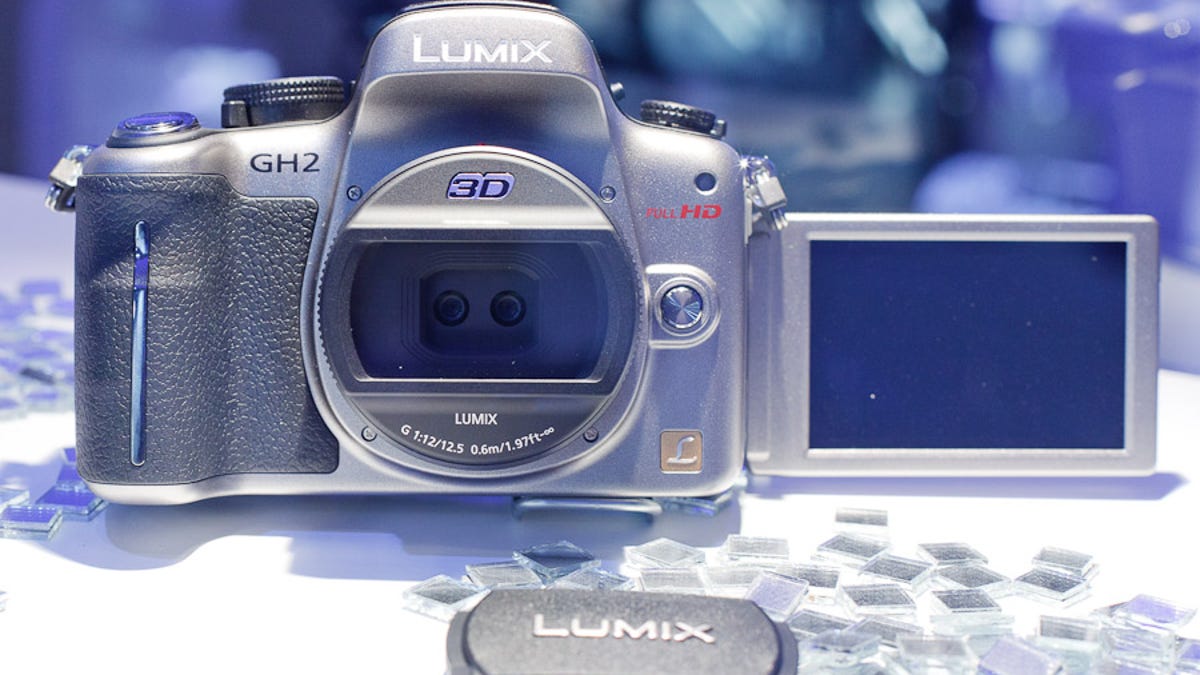Panasonic's compact cameras get third dimension
The company, an aggressive booster of 3D technology, adds a $250 lens to its higher-end compact camera line for taking 3D photos.

COLOGNE, Germany--Panasonic, perhaps the company with the most aggressive effort to push the transition to 3D technology, added another arrow to its quiver today in the form of a new camera lens.
The company debuted its first 3D-capable videocamera earlier this month at the IFA trade show, and now it's matched that move with a $250 still camera lens that can be attached to its Lumix G series of Micro Four Thirds cameras.
"The next step is to record your own memories of friends and families in 3D," said Mamoru Yoshida, senior vice president of Panasonic's AVC networks group, speaking at a press conference at the Photokina show here.
Panasonic unveiled the lens along with the Lumix DMC-GH2 camera, a Micro Four Thirds model that's the company's new flagship of the fleet. Its new 16.1-megapixel sensor permits better video recording and has a touch screen to ease focusing chores.
Don't expect the same resolution on your 3D images, though. Instead, they'll have about a 2-megapixel resolution, Ichiro Kitao, director of Panasonic's digital still camera business unit, said in an interview at the show.
Of course, viewing 3D photos requires a 3D TV. Panasonic would be delighted to sell you one, naturally. It's not clear yet how much consumer demand there is for 3D, but it is clear electronics companies see the prospect of a more immersive view financially enticing.
To achieve a 3D effect, the Panasonic lens has small twin lenses built within, separated by a distance of 1cm. Light from each shines separately onto the image sensor, which captures two images from the differing viewpoints. Light from each shines separately onto the image sensor, which captures two images from the differing viewpoints.
Human eyes are of course farther apart than 1cm, said Panasonic representative Lucas Wahl. But the separation is enough to impart a 3D effect when the human mind reconstructs a single scene from the two slightly different viewpoints, he said.

